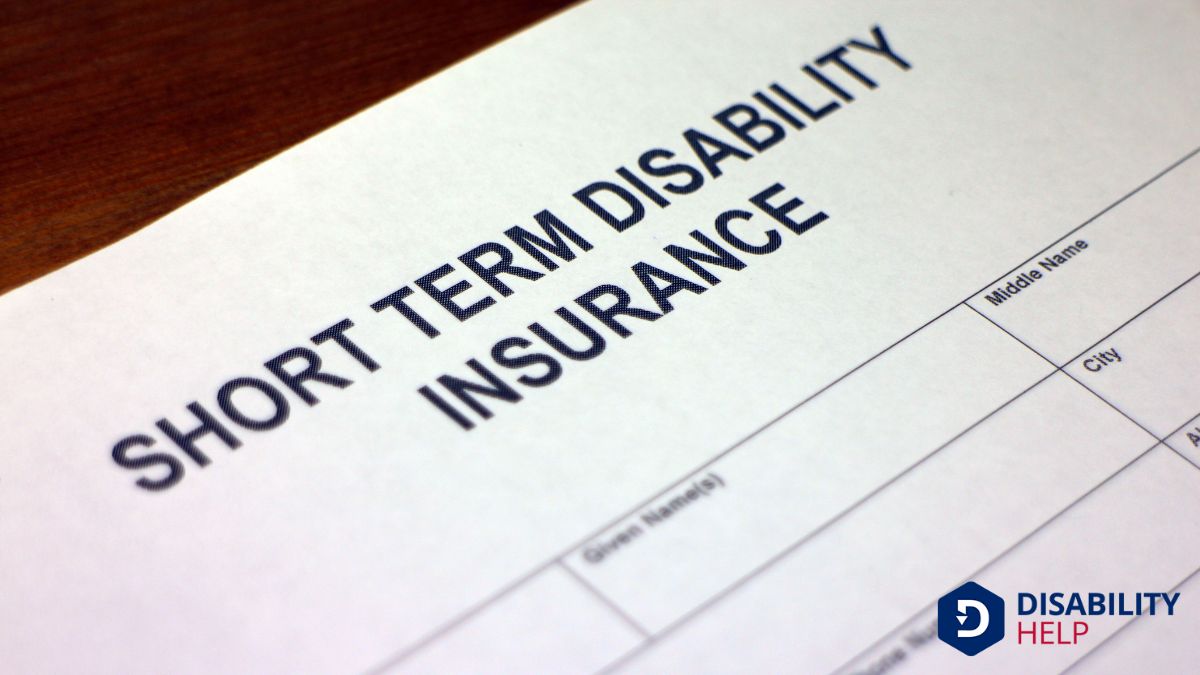When we think about disability insuranceA form of insurance that provides income to individuals who are unable to work due to a disability., it’s essential to understand the key differences between short-term and long-term options. Short-term policies typically offer immediate financial relief for temporary disabilities, while long-term policies provide extended support for more prolonged conditions. But what about the specifics, like coverage duration and benefit amounts? How do these factors impact our financial planning during recovery? Let's unravel these details and discover which type best suits our needs.
Key Takeaways
- Short-term disability covers a few months, while long-term disability extends benefits for several years or until retirement age.
- Short-term policies replace 60-70% of income; long-term policies cover 40-60% for longevity.
- Short-term insurance has waiting periods of 7-14 days; long-term insurance waits 90-180 days.
- Short-term policies have lower premiums and are for temporary disabilities; long-term policies are for severe conditions.
- Employer-provided policies are often cheaper; individual policies offer tailored coverage but at higher costs.
Understanding Disability Insurance: An Overview

When we start exploring disability insurance, it’s vital to grasp its fundamental purpose: providing financial support when illness or injury prevents us from working. This insurance is a safety net, ensuring we can manage our expenses even when we're unable to earn an income. It’s essential for maintaining our financial stability during uncertain times.
We often overlook the possibility of becoming temporarily or permanently disabled, but having a plan in place offers peace of mind. Disability insurance typically replaces a portion of our income, helping cover necessities like rent, groceries, and medical bills.
Duration of Coverage: Short-Term vs. Long-Term
When we compare short-term and long-term disability insuranceInsurance that provides income replacement for individuals who are unable to work for an extended pe..., we must first look at the differences in coverage timeframes and benefit duration limits.
Short-term plans typically provide benefits for a few months to a year, while long-term policies can extend benefits for several years or even until retirement.
Understanding these differences helps us choose the right option to suit our financial needs in the event of a disability.
Coverage Timeframe Differences
While exploring disability insurance options, understanding the differences in coverage timeframes is crucial.
Short-term disability insuranceInsurance that provides income replacement for a limited time when an employee is unable to work due... typically provides coverage for a few months, often ranging from three to six months. This type of insurance is designed to help us during temporary disabilities, ensuring we’re financially supported while we're unable to work for a limited duration.
On the other hand, long-term disability insurance is meant for longer periods. It kicks in after short-term coverage ends and can last several years, sometimes until retirement age, depending on the policy.
Long-term coverage offers a safety net for more severe conditions that prevent us from working over an extended period. By knowing these differences, we can make informed decisions that align with our needs.
Benefit Duration Limits
Benefit duration limits in disability insurance are an essential aspect to evaluate as we decide between short-term and long-term coverage.
Short-term disability insurance typically offers benefits for a brief period, often ranging from three to six months. This coverage is ideal for temporary conditions or recovery from minor injuries.
In contrast, long-term disability insurance can extend benefits for several years, sometimes until retirement age, offering a safety net for more severe or lasting conditions.
When considering our options, we should assess our financial needs and how long we might require support.
Short-term plans provide immediate relief, while long-term plans assure prolonged security.
Benefit Amounts: What to Expect
When we look at disability insurance, understanding benefit amounts is essential.
We'll explore how coverage percentage differences can impact our financial planning and compare how long each policy pays out.
Coverage Percentage Differences
How do coverage percentage differences impact your disability insurance benefits?
When we look at short-term and long-term disability insurance, one key difference is the percentage of income they cover. Typically, short-term policies replace about 60-70% of our income, providing immediate relief but for a shorter period.
On the other hand, long-term policies usually cover 40-60% of our salary. This lower percentage mightn't seem ideal at first, but remember, these benefits last much longer, offering sustained support during prolonged recoveries.
We need to evaluate our financial situation and needs when choosing between them. If we rely heavily on consistent income, understanding these differences helps us select the right policy.
It's all about balancing immediate needs with long-term security.
Maximum Benefit Duration
Have you ever wondered how long your disability benefitsFinancial assistance provided to individuals who are unable to work due to a disability, such as Soc... will last? When we're maneuvering through disability insurance options, understanding the maximum benefit duration is essential.
Short-term disability insurance typically offers coverage for a limited period, often between three to six months. This type of insurance is designed for temporary conditions where we expect to return to work relatively soon.
On the other hand, long-term disability insurance can provide benefits for several years, sometimes even until retirement age. This option is particularly valuable if we're dealing with a more severe, long-lasting condition.
Knowing the difference helps us plan effectively, ensuring we're prepared for any financial challenges a disability might bring. Let's make informed choices to protect our financial well-being.
Eligibility Requirements and Conditions
While exploring disability insurance options, it's important to understand the eligibility requirements and conditions that may impact our coverage.
Short-term and long-term disability insurance have distinct eligibility criteria. Generally, to qualify for either, we need to be employed and have a condition that prevents us from performing our job duties.
Short-term policies might require a minimum tenure with the employer, such as three to six months, while long-term policies often require longer periods, sometimes up to a year.
Additionally, certain pre-existing conditions mightn't be covered in the initial phase of these policies.
It’s vital to review the policy details carefully to guarantee we meet all conditions. Understanding these requirements helps us make informed decisions and secure the protection we need.
Waiting Periods: When Benefits Begin
When we're comparing disability insurance options, understanding waiting periods is essential for knowing when benefits kick in.
Short-term waiting periods can range from a few days to a couple of weeks, providing quicker support.
In contrast, long-term waiting periods might extend several months, requiring us to plan for a longer gap before receiving benefits.
Short-Term Waiting Periods
Short-term disability insurance policies often have waiting periods that determine when benefits kick in after a claim is approved. Typically, these waiting periods range from 7 to 14 days.
During this time, we won’t receive any benefit payments, so it’s crucial to plan accordingly. It’s a good idea to understand the specific waiting period in our policy, as it informs us how long we need to manage without the insurance benefits if we become unable to work.
This period allows the insurance company to process the claim and confirm eligibility. While waiting, using any available sick leave or savings can help bridge the gap.
Knowing these details guarantees we're prepared for any short-term financial interruptions due to unexpected health issues.
Long-Term Waiting Periods
Although long-term disability insurance provides essential financial protection, it often comes with extended waiting periods before benefits begin. We might find these waiting periods, typically ranging from 90 to 180 days, longer than we'd expect.
This means that even if we're unable to work due to illness or injury, we won't receive financial support immediately. It's vital we plan for this gap, ensuring we've savings or other means to cover our expenses during this time.
Understanding this aspect helps us avoid surprises and make informed decisions when choosing a policy. By considering the waiting period alongside other policy details, we can better prepare for the financial challenges of a long-term disability, ensuring our needs are met during difficult times.
Policy Costs and Premiums
Understanding the costs associated with disability insurance policies is essential, as these expenses can greatly impact our financial planning.
Short-term disability insurance generally has lower premiums than long-term policies because it offers coverage for a shorter period. We should expect short-term plans to provide benefits for a few months, which means they often cost less. However, the specific premium amount depends on factors like age, health, and the level of coverage chosen.
In contrast, long-term disability insurance tends to have higher premiums due to extended coverage periods, often lasting several years or until retirement. While long-term insurance is more expensive, it provides vital protection if we're unable to work for an extended time.
Balancing premium costs against potential benefits helps us make informed decisions.
Employer-Provided vs. Individual Policies
When considering disability insurance, it’s important to compare employer-provided policies with individual ones to determine which best suits our needs.
Employer-provided policies often come at little or no cost to us, as they're typically part of our benefits package. They offer convenience because enrollment is straightforward, and coverage starts soon after employment begins. However, these policies mightn't be customizable and could end if we change jobs.
On the other hand, individual policies allow us to tailor coverage to fit our specific needs. Although they usually involve higher premiums, they offer portability, meaning our coverage stays intact regardless of job changes.
It’s vital to weigh the benefits and limitations of each option to make an informed decision that aligns with our financial security goals.
Common Exclusions and Limitations
Choosing between employer-provided and individual disability insurance is just one part of the decision-making process. We also need to understand common exclusions and limitations that both short-term and long-term policies often include.
Most importantly, pre-existing conditions frequently fall under exclusions, meaning if we’ve had a medical condition before our policy starts, it mightn't be covered. Self-inflicted injuries or those sustained while committing illegal acts are typically excluded, too.
Furthermore, limitations can affect how long benefits last or the amount we receive. For instance, some policies may only cover specific types of disabilities or offer reduced benefits for mental health conditions.
How to File a Disability Claim
Filing a disability claim can seem overwhelming, but with the right preparation, it doesn't have to be.
First, let's gather all necessary documentation. This includes medical records and a statement from our healthcare provider confirming the disability. We should also have our employment details and proof of income ready.
Next, we'll contact our insurance provider to request the claim forms. It's essential to fill out these forms accurately and completely, as incomplete forms can delay processing.
Once we've submitted everything, let's keep a copy for our records and note any reference numbers provided.
Finally, we'll follow up regularly with the insurance company to check the status of our claim. By staying organized and proactive, we can navigate this process smoothly.
Combining Short-Term and Long-Term Policies

While exploring our insurance options, it's important to contemplate how short-term and long-term disability policies can complement each other. By combining both, we create a safety net that addresses different needs over time.
Short-term disability typically covers us for a few months, providing financial support immediately after an injury or illness. This can be essential in maintaining our income until we recover or shift to the long-term policy.
Long-term disability kicks in afterward, offering continued support if our condition persists. This approach guarantees we're not left without income during extended recoveries.
Conclusion
In understanding the differences between short-term and long-term disability insurance, we see how each serves our unique financial needs during recovery. Short-term plans offer quick support for temporary setbacks, while long-term policies provide extended coverage for more serious conditions. By knowing the duration, benefit amounts, and specific conditions of each, we can make informed choices. Let’s guarantee we’re prepared for life's uncertainties, safeguarding our income and peace of mind with the right combination of policies.






